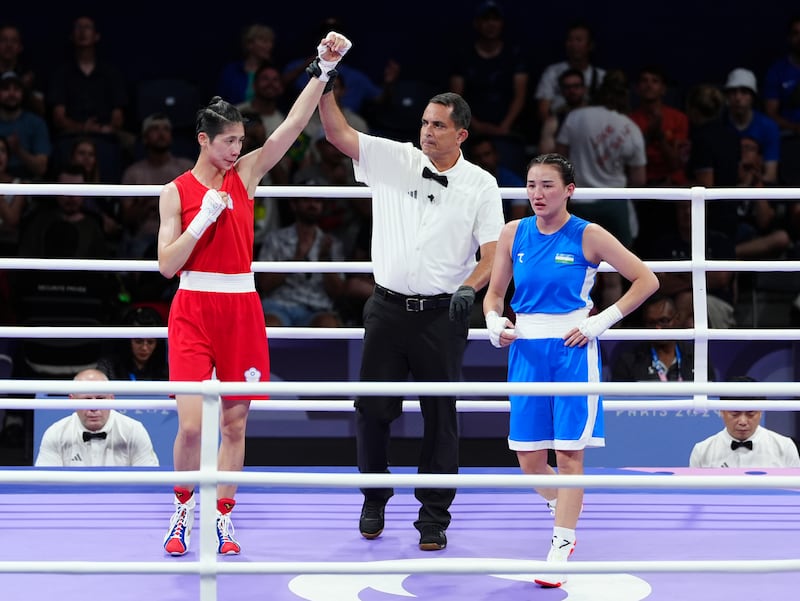Lin Yu-ting, one of the boxers at the centre of a gender row at the Olympics, won her opening bout on points after two-time gold medallist Nicola Adams waded into the controversy.
While cleared to compete, the participation of Lin and Imane Khelif at Paris 2024 has led to scrutiny as they were disqualified from last year’s World Championships for failing to meet gender eligibility criteria.
After Algeria’s Khelif won inside 46 seconds on Thursday, her beaten opponent – Italy’s Angela Carini – described that she had “never felt a punch like this” and the debate has intensified.
Carini has now apologised for her reaction to abandoning her fight, telling Italian newspaper Gazzetta dello Sport: “All this controversy makes me sad. I’m sorry for my opponent, too. If the IOC said she can fight, I respect that decision.”
Mixed golf event approved for Los Angeles Olympic Games
Leona Maguire teaming up with Shane Lowry? Mixed golf among new events added to 2028 Olympics
Hammer thrower Nicola Tuthill breaking new ground with help from Jerry Kiernan Foundation
Rhasidat Adeleke may feel the roundabout benefits of passing on Grand Slam Track
Taiwan fighter Lin, the top seed in the women’s featherweight category, put the drama momentarily to one side with a unanimous decision victory over Uzbekistan’s Sitora Turdibekova.
While there was one score of 29-28 and four of 30-27 in favour of Lin, this was far from the mismatch of 24 hours earlier, with Turdibekova able to get inside her taller and rangier opponent’s guard.
Ultimately, the cleaner work came from Lin and she set up a quarter-final contest against Bulgaria’s Svetlana Staneva, who defeated Ireland’s Michaela Walsh on all five judges’ scorecards.
Neither Lin, who was cheered on her way to the ring with no audible boos, nor Turdibekova stopped to speak to the media afterwards. The pair shared a handshake before the result was read out but not afterwards.

Adams, the two-time Olympic flyweight champion, expressed her fears for anyone going through male puberty to fight against women – although there is no proof either Lin or Khelif have done so.
Adams posted on X: “After years of fighting for women’s boxing to even exist in the Olympics and then all the training they go through to get there it was hard to watch another fighter be forced to give up on her Olympic dreams.
“People not born as biological women, that have been through male puberty, should not be able to compete in women’s sport. Not only is this unfair it’s dangerous!”
Both Lin and Khelif have competed in female boxing events for a number of years but the International Boxing Association (IBA), which carried out the tests in 2023, said the duo failed “to meet the eligibility criteria for participating in the women’s competition”.
However, the IBA was stripped as the global governing body for boxing in June last year by the IOC, which is administering the sport in Paris and has defended the rights of Lin and Khelif to compete.
In a joint statement on Thursday evening, the IOC and Paris 2024 Boxing Unit said both athletes have complied with eligibility rules, citing “misleading information” in some reports and what it called an “arbitrary” decision by the IBA last year to disqualify the pair from the World Championships “without due process”.
Speaking on Friday, IOC spokesman Mark Adams described the issue as a “minefield”, saying: “There still is neither scientific nor political consensus on this issue.
“It’s not a black-and-white issue, and we would at the IOC be very interested to hear of such a consensus on this, and we would be the first to act should a common understanding be reached.
“I know some of the athletes who underwent sex tests in their teens. It was pretty disgraceful and luckily that is behind us. This is a minefield and unfortunately, as with all minefields, we want a simple explanation of how we can determine this. That explanation does not exist.”















